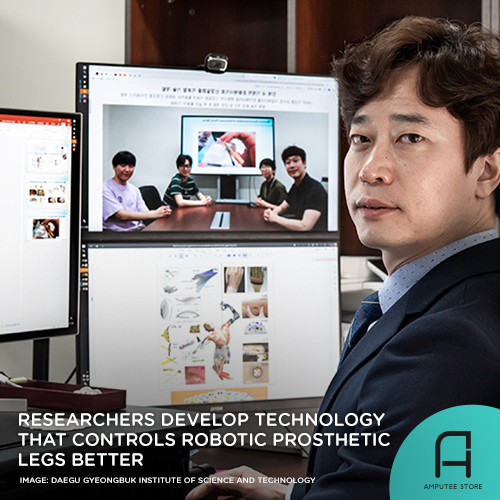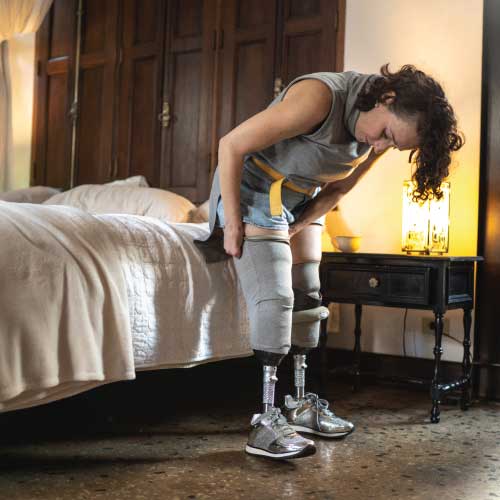Researchers Develop Technology that Controls Robotic Prosthetic Legs Better
The effects of amputation are not limited to physical disability; it often leads to psychological challenges as well. To address this problem, experts developed prosthetic limbs that use robotics to replace lost limbs. However, many existing robotic prosthetic legs are not intuitive to use.

Researchers at the Daegu Gyeongbuk Institute of Science and Technology (DGIST) in South Korea have recently developed a new sensor that allows people with lower-limb loss to control their robotic prosthetic legs more accurately and comfortably. The new sensor is an imperceptible surface electromyography (sEMG) device; it’s non-invasive and can be placed inside the silicone liner of the prosthetic socket.
The original idea was to use commercially available sensors, which presented a challenge. The sensors needed to be placed inside the prosthetic socket, which is a narrow and humid environment that is constantly moving. This made it difficult to record muscle signals accurately for a long time without damaging the sensors.
So, the DGIST research team led by Professor Sang-hoon Lee developed an imperceptive sEMG sensor. The sEMG sensor is a biointerface, which acts like a go-between, helping the signals from the body communicate with the prosthetic limb.
The sEMG is flexible and elastic, making it suitable for application to various amputated parts of the body, and it can be reused over an extended period. The sEMG sensor can wirelessly transmit real-time signals generated by the prosthetic user when walking with the robotic prosthetic limb, socket, and silicone liner.
The researchers found that sEMG is more accurate than commercially similar sensors. The team expects this sensor to be useful in various wearable technologies and to improve the control of robotic prosthetic legs and hands based on biological signals.
In a statement by DGIST, Lee expressed that more people are living with limb loss around the world than we might think. But they face several limitations in their daily lives due to the lack of prosthetic legs that can be intuitively controlled. He added that this research aims to develop bionic limbs that can effectively perform sensory and motor functions like human limbs. The goal of this research is to help amputees enjoy all the activities of daily living without any restrictions.











































































